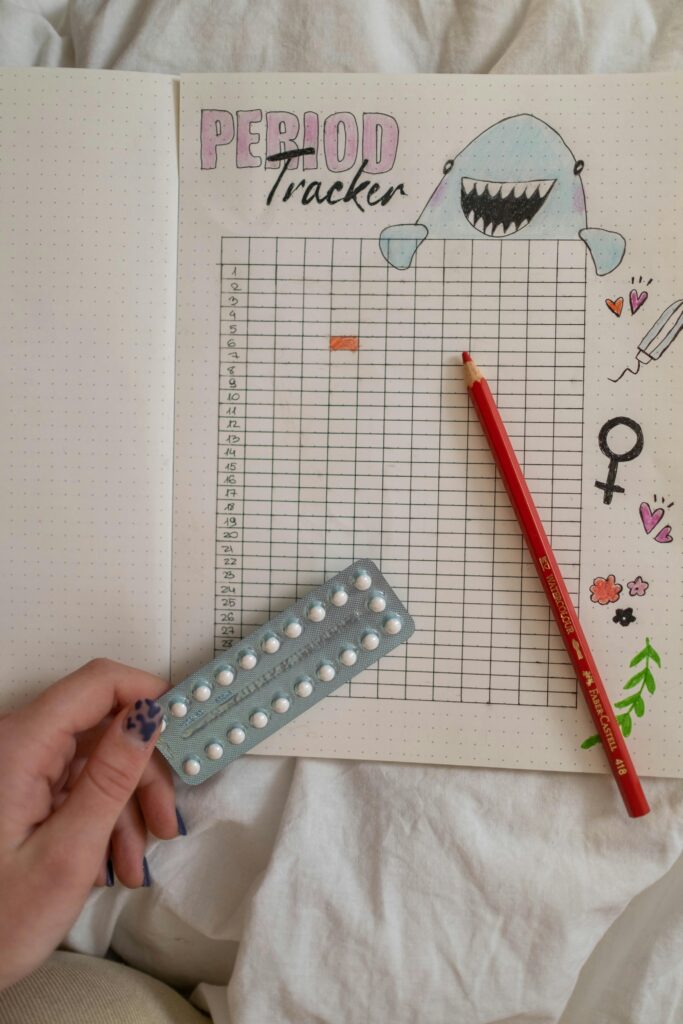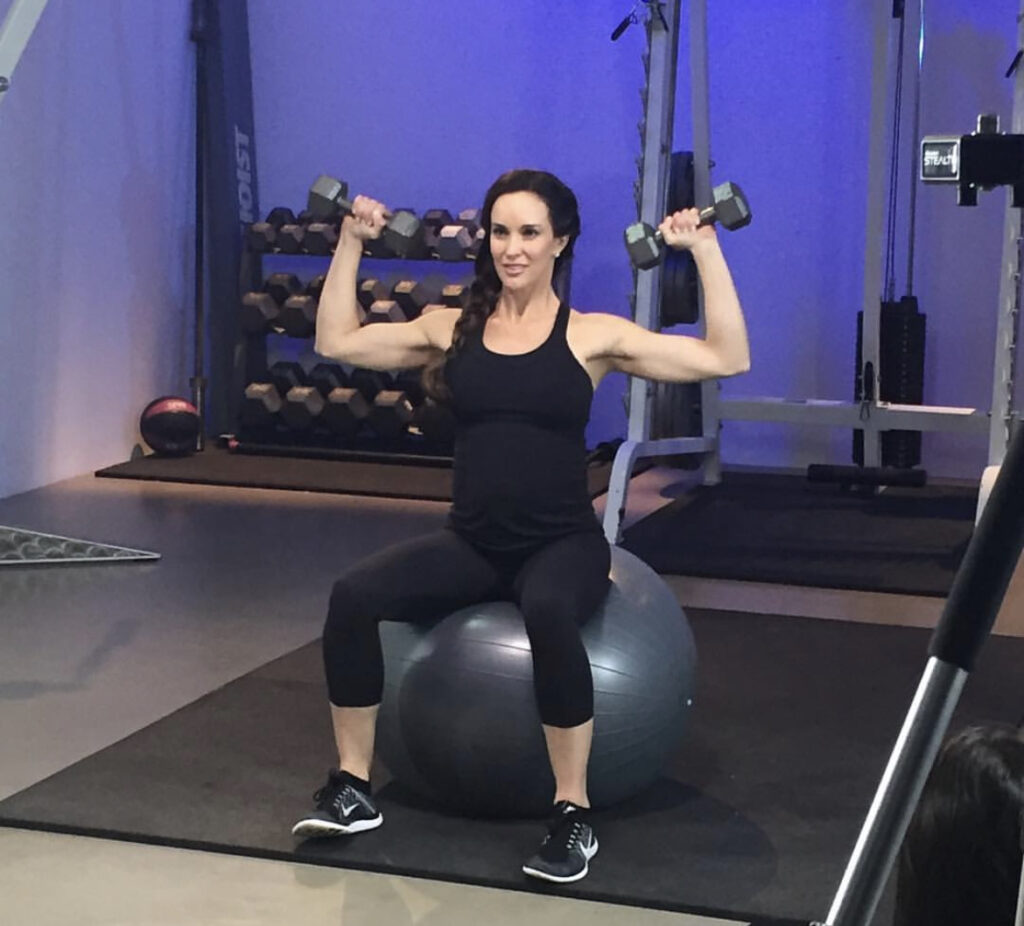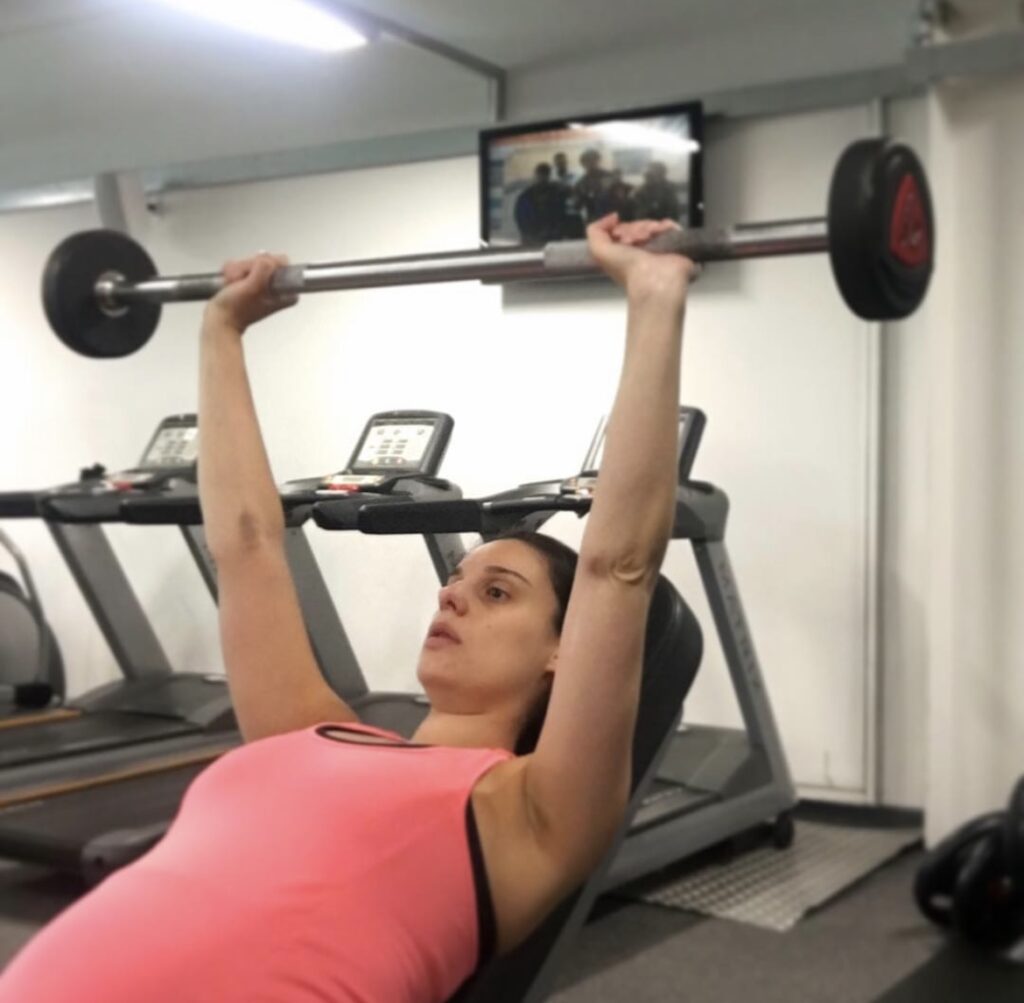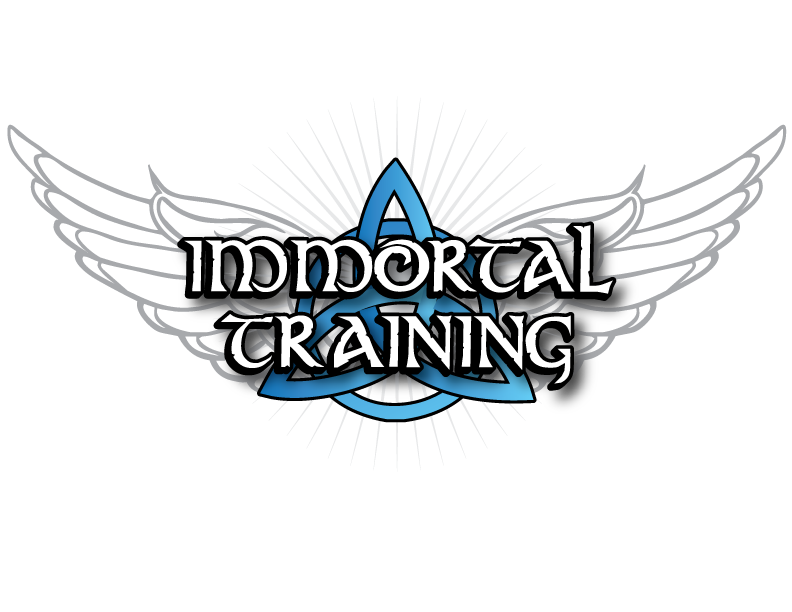by Tay Gabbidon | Nov 21, 2024 | Uncategorized
Why Did You Gain Weight Overnight? 7 Sneaky Reasons Explained
So, you stepped on the scale this morning, and suddenly you’re heavier than a Christmas Day turkey. You didn’t raid the fridge in your sleep (as far as you know), so why the surprise weight gain overnight? The good news: it’s not fat. The bad news: it’s a classic case of your body throwing a temper tantrum. From salty snacks to stress hormones, there are plenty of culprits. Let’s break down the seven most likely reasons why your body decided to pack on a few extra pounds while you were dreaming of abs.
1. Intense Workouts: Why Sweating Buckets Can Add Pounds
You crushed your workout, felt like a beast, and then the scale betrayed you with an unexpected increase. Before you throw your dumbbells out the window, remember this: intense exercise, especially strength training, can actually cause temporary weight gain. Here’s why.
When you engage in a tough workout, your muscles undergo microscopic tears—don’t worry, it’s a good thing. Your body responds to this stress by sending fluid (and a cocktail of nutrients) to the damaged tissues to kickstart the repair process. This is known as exercise-induced inflammation, and it’s a normal part of muscle recovery. The extra water your muscles hold onto can tip the scale slightly higher for a day or two. It’s not fat—it’s your body healing itself and building those coveted gains.
Another factor is glycogen replenishment. During an intense workout, your muscles use up glycogen (stored carbohydrates) for energy. Afterward, your body replenishes these stores, which pulls water into your muscles along with it. For every gram of glycogen stored, your body retains about 3 grams of water. So if your legs feel like boulders and the scale is up, it’s probably just water weight from refueled glycogen stores—not an actual increase in body fat.

2. Salt: The Sneaky Culprit Behind Overnight Weight Gain
You know that satisfying crunch of salty chips? Yeah, your scale remembers it too. One of the quickest ways to see a spike in your body weight overnight is indulging in high-sodium foods. Salt loves water more than a clingy ex—when you consume excess salt, your body holds onto water in an attempt to dilute the sodium. This is called water retention, and it can add a couple of pounds (or more) overnight, making you feel puffy and bloated.
Your kidneys play the main role here. When they detect high levels of sodium, they signal your body to hang onto more water to maintain a delicate balance of electrolytes. This temporary weight gain isn’t fat—it’s your body storing extra fluid. The good news? Once your sodium levels return to normal, your body will start flushing out the extra water. If you’re serious about reducing this kind of weight fluctuation, consider cutting back on processed foods and opting for whole, low-sodium options instead.
And if you’ve ever woken up with a face puffier than a marshmallow after a night of takeout, you’re not alone. It’s common after eating salty restaurant meals or fast food, which can easily exceed your recommended daily sodium intake in one sitting. Your weight gain overnight is just your body saying, “Hey, slow down on the salt!”
3. Stress and Cortisol: The “Fight or Flight” Fat Trap
You’ve had one of those days where everything goes wrong, and by the end of it, you’re holding a pint of ice cream, wondering why you look puffier than usual. Surprise—it’s stress wreaking havoc on your weight. When you’re stressed, your body releases cortisol, the primary stress hormone. Cortisol has a knack for making you retain water and even crave high-sodium, high-sugar foods. Talk about a double whammy.
Cortisol is part of your body’s “fight or flight” response, but in today’s world, your stress isn’t caused by sabertoothed tigers—it’s emails and deadlines. Elevated cortisol levels signal your body to hold onto more water and even store more fat, particularly around your abdomen. This hormonal response was great for survival in ancient times but isn’t as helpful when your biggest threat is a Zoom meeting gone wrong.
In short, stress can lead to temporary water retention, as well as an increased appetite for comfort foods, both of which can show up as an increase in your weight overnight. The fix? Easier said than done, but managing your stress through activities like meditation, exercise, or simply taking a break from your phone can help keep cortisol levels in check and reduce those frustrating weight fluctuations.
4. Carbohydrates: Your Body’s Favorite Sponge
Carbs have a bad rep, but the truth is, they’re your body’s main source of fuel. However, they can also make the scale jump overnight. Here’s why: when you eat carbs, your body stores them as glycogen in your muscles and liver. Glycogen is like a sponge—it holds onto water, about 3 grams of water for every gram of carbs stored.
So, if you indulged in a pasta feast, don’t be surprised if you see an increase in your weight the next morning. It’s just your muscles soaking up extra water along with the glycogen. This isn’t fat gain—it’s temporary water retention that usually evens out once your body uses up that stored energy during your next workout.
5. Poor Sleep: When One Bad Night Equals Extra Pounds
Tossed and turned all night? Don’t be shocked if the scale isn’t your friend the next morning. Sleep deprivation messes with your hormones—specifically ghrelin and leptin, which control your hunger and satiety. Less sleep means more ghrelin (your hunger hormone), less leptin (your “I’m full” hormone), and an increased craving for comfort foods. The result? You’re likely to eat more and retain water, leading to weight gain overnight.
Additionally, a lack of sleep spikes cortisol, your body’s stress hormone, which can further lead to fluid retention and a temporary increase in weight. So if you’re skimping on shut-eye, don’t blame the scale—blame the late-night scrolling or that Netflix binge.

6. Menstrual Cycle: When Hormones Throw a Water Weight Party
Ah, the joys of being a woman. One minute you’re feeling great, the next you’re bloated, cranky, and the scale is up a few pounds for no apparent reason. Blame it on your menstrual cycle. In the days leading up to your period, your body experiences a spike in estrogen and progesterone, which can lead to water retention and a temporary increase in weight. This isn’t fat—it’s fluid, and it can make you feel like you’ve been inflated like a balloon.
Progesterone is the main culprit here. It acts like a sponge, causing your body to hold onto more water as it prepares for menstruation. This is why you might notice swelling in your abdomen, legs, or even your face. It’s annoying, but it’s completely normal. The good news? The weight gain usually disappears once your period starts, as your hormone levels balance out and your body releases the retained water.
And if you’ve ever experienced those uncontrollable cravings for chocolate or salty snacks during PMS, you’re not alone. These cravings often lead to increased calorie intake and more sodium, which only adds to the temporary weight gain. But remember, this is just your body’s way of coping with hormonal changes—it’s not a permanent increase, just part of the monthly rollercoaster ride.
7. Food and Faeces: What’s Still Hanging Out in Your Gut
Let’s talk about the *unspoken* hero of weight fluctuations—**digestion**. If you’ve eaten a big meal recently, the food isn’t instantly metabolized or turned into energy. It can take anywhere from 6 to 48 hours for your body to fully digest and process what you’ve eaten. During this time, the weight of the undigested food (and yes, poop) sitting in your intestines can show up as temporary weight gain on the scale.
Your colon can hold a surprising amount of waste, and if you’re not regularly “emptying the tank,” this can add extra pounds. High-fiber foods and larger meals can also take longer to move through your digestive system, contributing to that full, bloated feeling. The result? You might be carrying around an extra pound or two of, well, yesterday’s dinner. But once everything gets moving (hello, bowel movement!), the scale usually drops back down.
It’s a good reminder that your body weight is more than just fat. It includes water, muscle, bones, organs, and the contents of your digestive system. So if you’re feeling heavier and haven’t, uh, visited the bathroom yet today, that might be the real reason behind your sudden weight gain overnight.
Conclusion
Don’t Panic: Weight Fluctuations Are Totally Normal
So, there you have it—seven reasons why your weight might spike overnight that have absolutely *nothing* to do with a new batch of fat. From salt and carbs to hormonal changes and digestive delays, your body can play tricks on you, making the scale seem like your worst enemy. But before you start stressing, remember that these fluctuations are often temporary. Your body is just doing its thing—retaining water, storing nutrients, and dealing with whatever life threw at it the day before.
Instead of obsessing over the number on the scale, focus on what you can control: staying hydrated, getting quality sleep, managing stress, and fueling your body with balanced meals. The next time your weight increases overnight, don’t panic. It’s just your body saying, “I’ve got this,” and by tomorrow, you’ll likely be back to normal. Just trust the process, keep working hard, and let those minor weight changes roll off your back—your real progress is happening underneath all that water weight.
REFERENCES:
https://pubmed.ncbi.nlm.nih.gov/6836285/
https://pubmed.ncbi.nlm.nih.gov/19940093/
https://pmc.ncbi.nlm.nih.gov/articles/PMC5409798/
Enjoy this article? Here’s a couple more!:
10 Warning Signs Your Cortisol is Way Too High – https://immortal-training.com/10-signs-in-women-that-your-cortisol-is-way-too-high/
Do These 4 Things Consistently to Build Your Dream Body – https://immortal-training.com/build-your-dream-body/
by Tay Gabbidon | Oct 11, 2024 | Blog, Science, Uncategorized
Hormonal Birth Control: Because Who Needs a Stable Mood Anyway?
Ah yes, hormonal birth control—the little magic pill that offers freedom from surprise pregnancies and, as a bonus, throws in mood swings, anxiety, and maybe a sprinkle of depression. Who needs emotional stability when you can have fool proof contraception, right? It’s not like anyone has ever asked, “Could manipulating hormones possibly lead to birth control mental illness?” Spoiler: It can. The link between hormonal birth control and mental health issues like depression and anxiety has been studied for years but often downplayed. After all, better safe than sane, right?
In this article, we’ll dive into the studies exploring this charming connection and, for those not too keen on spiraling into mental illness, suggest some healthier alternatives.

Forms of Medically Prescribed Hormonal Contraceptives
- IUDs (Intrauterine Devices): These little wonders release hormones like progestin and estrogen, preventing ovulation and thickening cervical mucus (gross, but effective). They’re convenient and reduce menstrual bleeding and cramps—what’s not to love? Oh, wait. Some studies suggest a possible link between hormonal IUDs and mental health issues, like anxiety and depression. A small price to pay for never needing to remember a pill, right?
- Copper IUD: For those who want to avoid hormones, copper IUDs are a non-hormonal option. The copper creates a sperm-hostile environment. Over 99% effective and lasts up to 10 years—no hormones, no problem…except for maybe heavier periods.
- Combined Pill: This classic pill contains both estrogen and progestin. It can regulate your cycle, but hey, it can also deregulate your emotions. Neat, huh?
- Progestogen-Only Pill (Mini Pill): Fewer hormones, fewer worries, right? Wrong. It still has its fair share of emotional side effects, because why not?
- Vaginal Ring (NuvaRing): A short-term solution that stops sperm from reaching the egg. Convenient but comes with its own hormonal baggage.
- Skin Patch (Xulane): Stick it on, forget it’s there for three weeks, but don’t forget it’s still pumping hormones into your system.
- Injections (Depo-Provera): Long-lasting but short-acting hormonal birth control that prevents your ovaries from releasing eggs. Side effects may include mood swings and, well, you know the drill by now.
Birth Control and Mental Illness Caused by Stress
Because mood swings weren’t enough, hormonal birth control might be messing with your therapy too. A 2023 study in Psychopharmacology found that women on oral contraceptives under stress had lower success rates in one-session exposure therapy. They were divided into two groups: one on the pill and one on a placebo. After a stressful situation and therapy, those on the pill didn’t respond as well to treatment. So if you’re using exposure therapy to manage anxiety, birth control might be your unexpected nemesis. Because who doesn’t want their contraception sabotaging their mental health progress?
Don’t Let Your Daughters Make the Same Mistake
Adolescence is tough enough without throwing hormonal birth control into the mix. But apparently, some bright ideas involve giving teenage girls oral contraceptives, increasing their chances of developing major depressive disorder later in life. According to research published in JAMA Psychiatry, girls on oral contraceptives during their teen years are at a higher risk of being prescribed antidepressants as adults. Because, clearly, surviving high school wasn’t challenging enough already. It’s a delicate time for brain development, and hormonal manipulation could have lasting effects on mental health. But hey, at least it prevents surprise pregnancies, right?
Try Not to Fall in Love While on Birth Control
Hormonal birth control does more than stop pregnancies—it can also tinker with how you pick a partner. Typically, during your fertile phase, you’re more likely to be drawn to men with masculine features—strong jawlines, deep voices, and assertiveness. Thank estrogen for that. But when you’re on the pill, those hormones stay steady, and so do your preferences. Research shows that women on hormonal contraception are often attracted to men with less masculine traits—softer features and more cooperative behavior.
Now, this might seem like no big deal, but it could lead to long-term consequences. If you pick a partner while on birth control, you might find your preferences change when you go off the pill. One study found that women who met their partners while on birth control were less satisfied with their relationship once they stopped using it. These hormonal shifts can influence not only your partner choices but also your overall relationship satisfaction.
Oh, and don’t forget the sexual desire aspect. Another study found that women who chose their partners while on birth control experienced different levels of sexual desire during pregnancy compared to those who weren’t on the pill when they started their relationships. So, your contraception might also be influencing how much you desire your partner in the long run. Fun, right?
In short, hormonal birth control could be impacting way more than just your reproductive system—it might be messing with your relationship and attraction. So, if you suddenly feel less spark after ditching the pill, it’s not just in your head. Your hormones might have had a hand in your love life too.

Non-Hormonal Contraceptive Options: Because Who Needs More Hormones
If hormonal birth control isn’t your cup of tea—because, let’s be real, who wants to juggle mood swings, partner confusion, and potential mental health meltdowns?—there are plenty of non-hormonal alternatives that can keep you baby-free without turning your emotional life into a rollercoaster. Here are some options that allow you to stay in control without the hormonal circus:
- Copper IUD: This little device is like the bouncer at the club of your uterus. It doesn’t contain hormones and is over 99% effective for up to 10 years. The copper creates a hostile environment for sperm, preventing them from fertilizing an egg. Plus, it can also make your periods heavier, which is a lovely bonus for some!
- Condoms: Ah yes, the classic option that’s been around since before your mom was in high school. Condoms are a barrier method that prevents sperm from entering the uterus. They also protect against sexually transmitted infections (STIs), so you get double the benefits. Remember to keep a few in your nightstand, just in case!
- Diaphragms: Think of a diaphragm as your personal bodyguard for the cervix. This soft, silicone cup is inserted before intercourse and works by blocking sperm from entering the uterus. It’s used with spermicide for maximum effect, so you’ll need to plan ahead.
- Fertility Awareness Methods (FAM): If you’re the scientific type, FAM involves tracking your menstrual cycle to determine fertile days. This can include monitoring your basal body temperature and observing changes in cervical mucus. It’s natural, but requires dedication, patience, and a dash of math.
- Withdrawal Method: Also known as “pulling out,” this method relies on your partner’s timing skills. While it’s better than nothing, it’s not the most reliable, as pre-ejaculate fluid can contain sperm.
- Spermicide: This chemical kills sperm and is available in various forms, like gels, foams, or films. It’s usually used in conjunction with other barrier methods for better efficacy. Just remember, it can mess with your pH balance, so tread carefully.
While these alternatives might not come with the same level of convenience as popping a pill, they can help you take control of your reproductive health without the potential emotional chaos of hormonal birth control. Who knew staying baby-free could be so varied?
If you’re interested in exploring these options further, consult with a healthcare provider to determine what works best for you—because no one should navigate this maze alone!
Conclusion
Hormonal birth control may be convenient, but it comes with strings attached. From messing with your mood to altering who you’re attracted to, the side effects extend beyond the physical. If you’re feeling off, or maybe even wondering why you’re not quite as into your partner anymore, it could be worth reconsidering whether the pill is doing more harm than good. Your mental health—and maybe even your love life—might thank you.
References:
https://www.ncbi.nlm.nih.gov/pmc/articles/PMC8363127/
https://jamanetwork.com/journals/jamapsychiatry/fullarticle/2751923
https://www.ncbi.nlm.nih.gov/pmc/articles/PMC9291927/
https://www.ncbi.nlm.nih.gov/pmc/articles/PMC5050240/#:~:text=Thus%2C%20if%20a%20woman’s%20hormonal,match%20her%20preferences%20as%20closely.
https://pubmed.ncbi.nlm.nih.gov/26704416/
by Tay Gabbidon | Aug 21, 2024 | Blog, Science, Uncategorized
I’ve heard all the excuses before. “I can’t lose weight because of my cortisol!” or ” Insulin resistance is stopping my gains!” And my favourite, “I have a slow metabolism!” Although there are lots of coaches online who love to sell you bogus programs or products to capitalise on your ignorance, I can assure that these are all lies.
Let’s face it—when it comes to transforming your body, the endless barrage of fad diets and workout trends can leave you more confused than motivated. But here’s the truth: achieving the lean, toned physique you’ve always wanted doesn’t require drastic measures or the latest “miracle” solution. Instead, it’s all about mastering the basics and staying consistent.
In this article, we’re diving into the four essential pillars of fat loss and muscle sculpting: strength training, a high-protein, nutrient-dense diet, staying active throughout the day, and getting quality sleep. Each plays a crucial role in helping you lose fat and build a strong, healthy body. Ready to learn the science-backed strategies that will finally get you the results you deserve? Let’s get started.

LIFT WEIGHTS 3-4 TIMES PER WEEK
Let’s get one thing straight: if you’re still relying on cardio alone to build your dream body, it’s time for a reality check. Lifting weights 3-4 times a week is the true game-changer when it comes to losing fat and sculpting a strong, lean physique.
Here’s the science: strength training not only helps you build muscle but also revs up your metabolism. The more muscle you have, the more calories you burn—even when you’re not working out. Imagine burning fat while binge-watching your favorite shows. Sounds like a win, right?
But let’s be real—it’s not just about burning calories. Lifting weights helps you build that lean muscle mass that gives you a toned, defined look. We’re talking about sculpted arms, a lifted booty, and strong legs that look great in everything from skinny jeans to yoga pants. Unlike cardio, which can leave you feeling like you’re spinning your wheels (literally), strength training delivers results that you can see and feel.
And before you worry about getting “bulky,” let me assure you—women simply don’t have the testosterone levels to pack on muscle like bodybuilders. What you will gain is strength, confidence, and a body that feels as good as it looks.
So, why lift 3-4 times a week? It’s the perfect balance to achieve results without overdoing it. Your body needs time to recover, repair, and come back stronger. Plus, let’s face it—your schedule is packed, and spending hours in the gym just isn’t practical.
In short, lifting weights 3-4 times a week is the smart, efficient way to lose fat and sculpt a physique that turns heads. Ready to embrace the weights? Your dream body is just a dumbbell away.

STICK TO A HIGH-PROTEIN NUTRIENT-DENSE DIET IN A SLIGHT CALORIC DEFICIT
Alright, let’s talk about the other half of the equation: your diet. If you’re lifting weights 3-4 times a week and still wondering why your dream physique isn’t showing up, it’s time to look at what’s on your plate. Spoiler alert: your diet is just as important as your workout routine when it comes to losing fat and sculpting that lean, strong body.
Here’s the deal: to lose fat, you need to be in a slight caloric deficit. This means consuming fewer calories than you burn. But before you start slashing calories left and right, understand that quality matters. Cutting out too many calories can leave you feeling sluggish, cranky, and—worst of all—cause muscle loss instead of fat loss. Enter the high-protein, nutrient-dense diet.
Protein is your secret weapon. It helps preserve that hard-earned muscle while you’re shedding fat. It is the most nutrient dense food on the planet, with the highest absorbability rate for minerals. Plus, it keeps you full longer, reducing the chances of raiding the snack drawer at 10 p.m. Whether it’s lean meats, fish, eggs, or plant-based options like beans and tofu, make protein the star of your meals.
But let’s not forget about veggies. A nutrient-dense diet, packed with vegetables, fruits, whole grains, and healthy fats, ensures your body gets the vitamins and minerals it needs to function at its best. This isn’t just about looking good—it’s about feeling good too.
So, why is this combination necessary? Because you can’t out-train a bad diet. You need the right fuel to support your workouts, maintain muscle, and lose fat. A high-protein, nutrient-dense diet in a slight caloric deficit is the key to seeing the results you’ve been working so hard for.
Ready to level up? Stick to this approach, and watch how your body transforms into that dream physique you’ve been chasing.

KEEP YOUR ACTIVITY LEVELS UP
So, you’ve got the weightlifting routine down and your diet on point. But there’s another piece of the puzzle: staying active throughout the day. If you’re serious about losing fat and sculpting your dream physique, keeping your activity levels high is non-negotiable.
Let’s be clear—your workouts are crucial, but what you do during the other 23 hours of the day matters too. Enter Non-Exercise Activity Thermogenesis, or NEAT. It’s a fancy way of saying all the calories you burn doing everyday activities that aren’t formal exercise. Think walking, gardening, cleaning the house, or even fidgeting at your desk. These activities might seem small, but they add up in a big way.
The truth is, staying active throughout the day keeps your metabolism humming and helps you burn more calories overall. This is especially important when you’re in a slight caloric deficit to lose fat. The more you move, the more fat you burn—and the closer you get to that sculpted physique.
Now, let’s talk about ways to keep moving. Walking is a simple, effective way to stay active—whether it’s a stroll around the neighbourhood or parking farther from the store. Ideally, 8,000-10,000 steps per day is a great target to aim for. Gardening not only beautifies your space but also gives you a decent workout, especially when lifting pots or pulling weeds. Even taking the stairs instead of the elevator or dancing around the kitchen while cooking can make a difference.
The key is to find activities you enjoy, so staying active doesn’t feel like a chore. The more you incorporate movement into your day, the more you’ll see results. Plus, staying active boosts your mood and energy levels—so it’s a win-win.

GET GOOD QUALITY SLEEP
Let’s talk about something that often gets overlooked in the quest for that dream body: sleep. If you’re lifting weights, eating a high-protein diet, and staying active but still not seeing the results you want, the culprit might just be poor sleep. Yes, ladies, quality sleep is just as crucial as your workout routine and diet when it comes to losing fat and sculpting a lean, strong physique.
Here’s the science behind it. When you sleep, your body goes into repair mode. This is when your muscles recover and grow stronger, and your body regulates key hormones like cortisol (the stress hormone) and insulin (which controls blood sugar). Skimping on sleep throws these hormones out of whack, leading to increased cravings, especially for sugary and high-carb foods, and making it harder for your body to burn fat.
But that’s not all. Lack of sleep can mess with your metabolism, slowing it down and making it tougher to shed those extra pounds. Plus, when you’re sleep-deprived, your energy levels plummet, making it harder to stick to your workout routine or stay active throughout the day.
So, how do you ensure you’re getting good quality sleep? Start by aiming for 7-9 hours of shut-eye each night. Create a relaxing bedtime routine—think warm baths, reading, or light stretching—and keep your sleep environment cool, dark, and quiet. Limiting screen time before bed also helps, as the blue light from devices can interfere with your body’s natural sleep-wake cycle.

THE BOTTOM LINE FOR SCUPLTING YOUR DREAM PHYSIQUE
Achieving your dream physique isn’t about one magic trick—it’s about a balanced approach that combines strength training, a high-protein diet, daily activity, and quality sleep. When you consistently focus on these key areas, your body will respond by shedding fat and revealing those lean, toned muscles.
To recap, here’s your blueprint for success:
- Lift weights 3-4 times a week to build muscle and boost your metabolism.
- Stick to a high-protein, nutrient-dense diet in a slight caloric deficit to fuel your body and preserve muscle.
- Stay active throughout the day with activities like walking, gardening, or taking the stairs to keep your metabolism revved up.
- Prioritize quality sleep to support recovery, balance hormones, and keep your energy levels high.
By following these steps, you’ll be well on your way to sculpting the strong, lean physique you’ve always wanted. Remember, consistency is key—and with these strategies, you’re setting yourself up for lasting success.
References:
Impact of Skeletal Muscle on Metabolic Health: https://www.ncbi.nlm.nih.gov/pmc/articles/PMC7090295/
Exercise and Circulating Cortisol Levels: The Intensity Threshold Effect: https://pubmed.ncbi.nlm.nih.gov/18787373/
Enjoy this article? Here’s more!:
10 Warning Signs in Women Your Cortisol is Way Too High – https://immortal-training.com/10-signs-in-women-that-your-cortisol-is-way-too-high/
Why is Adrenal Fatigue So Dangerous for Women? – https://immortal-training.com/why-is-adrenal-fatigue-so-dangerous-for-women/
by Tay Gabbidon | Jul 13, 2023 | Blog, Nutrition, Science, Uncategorized
HIGH CORTISOL IN WOMEN
Welcome to our discussion on the impact of high cortisol levels on female hormonal health, particularly for women aged 35 and above. Cortisol, often referred to as the “stress hormone,” plays a crucial role in our body’s response to stress. While cortisol is essential for our survival, chronically elevated levels can lead to various health issues, particularly in women. On top of that, it can literally change the shape of a women’s body, robbing it of it’s natural beauty.
When cortisol levels remain consistently high, it can disrupt the delicate balance of hormones in a woman’s body. This hormonal imbalance can have a significant impact on female reproductive health. As women age, hormone levels fluctuate, and high cortisol levels can exacerbate these changes, causing a range of problems.
Let’s look at the 10 biggest signs to look out for when identifying high cortisol levels in women.

#1. WEIGHT GAIN
When cortisol levels are consistently elevated, it can lead to weight gain, particularly in the abdominal area. This is because cortisol promotes the storage of fat in the abdominal region, resulting in a more apple-shaped body. Cortisol interferes with the functioning of the thyroid, which plays a vital role in regulating metabolism and energy levels. This disruption can lead to symptoms such as fatigue, weight gain, and difficulty losing weight, which are often experienced by women.
Visceral fat, which is the fat that surrounds the organs in the abdominal cavity, is particularly influenced by high cortisol levels. This type of fat is metabolically active and can increase the risk of various health issues, including cardiovascular disease, type 2 diabetes, and metabolic syndrome. The accumulation of visceral fat is often associated with high cortisol levels, which breaks down muscle protein and converts protein into glucose, leading to increased fat storage.
#2. BLOOD SUGAR IMBALANCES
Cortisol plays a crucial role in regulating blood sugar levels by promoting the breakdown of glycogen into glucose in the liver. This process, known as glycogenolysis, increases the amount of glucose in the bloodstream, providing a quick source of energy to deal with the perceived threat or stressor.
However, prolonged or chronic high cortisol levels can disrupt this delicate balance. Cortisol can interfere with the action of insulin, a hormone that helps regulate blood sugar levels by facilitating the uptake of glucose into cells. When cortisol levels are consistently elevated, it can lead to insulin resistance, where the cells become less responsive to the effects of insulin. This can result in higher blood sugar levels, as the glucose is unable to enter the cells efficiently. Over time, this can contribute to the development of conditions such as type 2 diabetes.
#3. APPETITE CRAVINGS
The goal of cortisol in relation to food cravings is to provide the body with a quick source of energy. When cortisol levels are elevated, the body perceives it as a signal of stress or danger, and it prepares for a fight-or-flight response. In this state, the body craves foods that are high in sugar and carbohydrates because they can be quickly converted into energy. These “comfort foods” can provide a temporary sense of relief and pleasure.
Additionally, high cortisol levels can cause the body to lose minerals such as magnesium and potassium. These minerals are essential for maintaining proper bodily functions, including the regulation of appetite and cravings. When cortisol levels are elevated, the body excretes more minerals through urine, leading to deficiencies. This can contribute to craving things like salt and red meat as the body tries to compensate for the loss of minerals.

#4. FREQUENT INFECTIONS
Cortisol helps regulate the body’s immune response but when levels are elevated for prolonged periods, it can suppress the immune system. Therefore, it can hinder the body’s ability to fight off infections and illnesses.
High cortisol levels can lead to a decrease in the production of white blood cells, which are crucial for immune defense. These cells play a vital role in identifying and destroying harmful pathogens. High cortisol levels can impair the production and function of these cells, leaving the body more vulnerable to infections like colds & flus.
Additionally, cortisol can interfere with the inflammatory response. Inflammation is a natural defense mechanism that helps the body fight off infections. However, excessive cortisol can dampen this response, making it harder for the immune system to effectively combat pathogens. This can result in a higher likelihood of frequent infections and illnesses.
#5. MENSTRUAL PERIOD
When cortisol levels are high, it can affect the hypothalamus, a part of the brain that plays a crucial role in regulating the menstrual cycle. In this situation, cortisol stimulates the release of corticotropin-releasing hormone (CRH) from the hypothalamus. CRH then signals the pituitary gland to release adrenocorticotropic hormone (ACTH), which further stimulates the production of cortisol.
The release of CRH also has an inhibitory effect on the release of gonadotropin hormone-releasing hormone (GnRH) from the hypothalamus. GnRH is responsible for triggering the release of follicle-stimulating hormone (FSH) and luteinizing hormone (LH) from the pituitary gland, which are essential for the development and release of eggs from the ovaries. When GnRH is suppressed, it disrupts the normal hormonal cascade, leading to irregular or absent menstrual cycles.
In addition to affecting the hypothalamus, high cortisol levels can also impact the ovaries directly. Cortisol can interfere with the production and function of estrogen and progesterone, two key hormones involved in the menstrual cycle. This disruption can further contribute to irregularities in the menstrual cycle and may even lead to conditions such as polycystic ovary syndrome (PCOS) or amenorrhea.
#6. OSTEOPOROSIS
In the United States, 8 million women have osteoporosis compared to 2 million men. In the United Kingdom, 21.9% of women compared to 6.7% of men are estimated to suffer from the disease. As you can see, osteoporosis is more of a threat for women.
Cortisol can interfere with the normal process of bone remodeling in women particularly. It can suppress the activity of osteoblasts, which are responsible for bone formation, while promoting the activity of osteoclasts, which break down bone tissue. This imbalance can result in a net loss of bone density over time, leading to osteoporosis.
Additionally, high cortisol levels can affect the absorption and metabolism of calcium, an essential mineral for maintaining bone health. Cortisol can decrease the absorption of calcium from the intestines and increase its excretion through the kidneys. This can further contribute to a decrease in bone density and increase the risk of osteoporosis. It is important to manage stress and maintain healthy cortisol levels to protect bone health.
#7. MUSCLE WEAKNESS
High cortisol levels in women causes muscle weakness by promoting protein breakdown and inhibiting muscle growth. This can lead to a loss of muscle mass and strength. Additionally, cortisol can redistribute fat to the abdominal area, resulting in a bigger belly. It can also lead to a flattening of the buttocks due to the breakdown of muscle tissue in that area. A nightmare for any women looking to build or maintain a healthy, feminine figure!
When cortisol levels are high, the body enters a catabolic state, breaking down muscle protein for energy. This can result in muscle weakness and a decrease in overall muscle mass. The breakdown of muscle protein also releases amino acids, which can be converted into glucose by the liver, leading to increased blood sugar levels.
Furthermore, high cortisol levels can impair the production of growth hormone, which is essential for muscle growth and repair. This further contributes to muscle weakness and loss of muscle mass. Additionally, cortisol can increase the production of enzymes that break down collagen, a protein that provides structure to muscles and connective tissues.
#8. EASY BRUISING
High cortisol levels can cause easy bruising by weakening blood vessels and impairing the body’s ability to repair them. When cortisol levels are elevated, collagen production is reduced, making blood vessels more fragile and prone to damage. Additionally, cortisol can impair the function of platelets, which are responsible for clotting and preventing excessive bleeding. This combination of weakened blood vessels and impaired clotting mechanisms can lead to easy bruising even from minor injuries.
Furthermore, high cortisol levels can also increase inflammation in the body, which can further contribute to easy bruising. Inflammation can weaken blood vessel walls and make them more susceptible to damage. Additionally, inflammation can impair the body’s ability to repair damaged blood vessels, prolonging the healing process and increasing the likelihood of bruising.
#9. SLOW HEALING
High cortisol in women slows down the body’s healing process by suppressing the immune system and reducing inflammation. This can result in delayed wound healing and prolonged recovery times.
As previously mentioned, high cortisol disrupts the balance of other hormones in the body, such as growth hormone and testosterone, which are important for tissue repair and regeneration. Corticosteroids, synthetic versions of cortisol, are often prescribed to reduce inflammation in certain medical conditions. However, prolonged or excessive use of corticosteroids can lead to high cortisol levels and subsequently hinder the body’s healing abilities. It is important to manage stress levels and seek medical advice to maintain a healthy cortisol balance for optimal healing.

#10. INSOMNIA
High cortisol levels can cause insomnia by disrupting the sleep/wake cycle regulated by the pineal gland. The pineal gland produces melatonin, a hormone that helps regulate sleep. When cortisol levels are high, it can interfere with the production of melatonin, leading to difficulty falling asleep or staying asleep.
Additionally, high cortisol levels can increase alertness and arousal, making it harder to relax and fall asleep. Cortisol is released in response to stress, so chronic stress can lead to consistently elevated cortisol levels, further exacerbating insomnia.
To improve sleep and reduce cortisol levels, it is important to manage stress through relaxation techniques, regular exercise, and a healthy lifestyle. Creating a calming bedtime routine and ensuring a comfortable sleep environment can also help promote better sleep.
SOLUTIONS
Unfortunately, there isn’t a magic pill, or a one-step solution that you can take to keep your cortisol levels in check. As most things that apply to living a healthy lifestyle, you will need a well rounded approach and improving your situation won’t happen overnight. Here are some things that you should consider doing to support healthy cortisol levels within the body:
- Get enough sleep – aim for 7-9 hours per night to help regulate cortisol levels and promote overall well-being.
- Practice stress management techniques like deep breathing, meditation, or yoga to reduce cortisol production.
- Engage in regular exercise, such as walking or swimming, to help lower cortisol levels and improve mood.
- Eat a balanced diet rich in fruits, vegetables, and whole grains, while limiting processed foods and sugar, which can contribute to cortisol spikes.
- Prioritize relaxation and self-care activities, such as taking baths, reading, or listening to music, to help lower cortisol levels and promote a sense of calm.
- Limit caffeine intake, as it can stimulate cortisol production and contribute to elevated stress levels.
- Maintain a healthy work-life balance to reduce chronic stress and keep cortisol levels in check.
- Stay hydrated by drinking enough water throughout the day, as dehydration can increase cortisol levels.
- Incorporate stress-reducing supplements like ashwagandha or magnesium into your routine, after consulting with a healthcare professional.
- Seek social support from friends, family, or support groups to help manage stress and keep cortisol levels low.

REFERENCES:
https://pubmed.ncbi.nlm.nih.gov/27345309/
https://www.ncbi.nlm.nih.gov/pmc/articles/PMC4688585/
https://pubmed.ncbi.nlm.nih.gov/14671189/
https://www.thearthritisconnection.com/rheumatoid-arthritis/cortisol-and-bone-loss#:~:text=Elevated%20cortisol%20levels%20interfere%20with,an%20increased%20risk%20for%20osteoporosis.
Did you enjoy this article? Try these!
Why is Adrenal Fatigue so Difficult for Women? – https://immortal-training.com/why-is-adrenal-fatigue-so-dangerous-for-women/
Healing Leaky Gut Syndrome to Restore Hormonal Balance – https://immortal-training.com/healing-leaky-gut-syndrome-to-restore-hormonal-balance/
by Tay Gabbidon | Apr 21, 2023 | Uncategorized
Leaky gut syndrome AKA intestinal hyperpermeability, is a digestive condition that has gained attention in recent years. It occurs when the intestinal lining becomes more permeable than usual. When this happens, harmful substances such as bacteria, toxins, and undigested food particles enter the bloodstream. This can cause a range of symptoms, including bloating, gas, abdominal pain, fatigue, skin rashes, and more. In this article, we will explore the causes, symptoms, and potential treatments for leaky gut syndrome. Respectively, I will also provide tips for maintaining gut health.
While the exact cause of this condition is not fully understood, studies suggest that certain lifestyle factors play a role in its development. In particular, those with poor diet, chronic stress, and certain medical conditions may be more susceptible to experiencing leaky gut. Understanding the risk factors for this condition can be essential in preventing its effects and improving overall digestive health.

WHAT ARE THE ROOT CAUSES OF LEAKY GUT SYNDROME?
Leaky gut syndrome can be caused by the following:
- An imbalanced gut microbiome (dysbiosis) – characterized by an overgrowth of harmful bacteria and a lack of beneficial bacteria.
- Chronic stress – Stress causes inflammation, which weakens the intestinal lining, making it susceptible to damage. Additionally, when the body is under stress, it produces more of the hormone cortisol, contributing to gut permeability.
- Sugar – Eating too much sugar & processed foods trigger inflammation and increases permeability of your gut barrier.
- Alcohol – reducing alcohol consumption can help to prevent leaky gut and promote overall well-being.
- Non-steroidal anti-inflammatory drugs – Ibuprofen and similar drugs also cause inflammation, potentially leading to digestive issues and other health problems. It is recommended to use NSAIDs sparingly and with caution to avoid any unpleasant side-effects.
- Raw vegetables can contribute to leaky gut syndrome due to the high levels of lectins and other anti-nutrients found in some raw veggies. Consuming large quantities of raw vegetables without proper preparation can exacerbate these effects, particularly in individuals with pre-existing digestive issues.
WHY IS A LEAKY GUT SO DANGEROUS FOR WOMEN’S HEALTH?
Leaky gut syndrome can be particularly dangerous for women due to various factors, including sex hormones, stress, and autoimmune disorders. Studies have found that estrogen can make the intestinal lining more permeable, making women more vulnerable to this condition. Additionally, stress can exacerbate leaky gut symptoms. Women are more likely to experience chronic stress due to societal and cultural pressures. This chronic stress can lead to inflammation in the gut, increasing the risk of developing leaky gut syndrome.
Furthermore, autoimmune disorders are more prevalent in women, and leaky gut syndrome is often associated with these conditions. In people with autoimmune disorders, the immune system attacks healthy tissues in the body, including the intestinal lining. Damage to the intestinal tissue can lead to increased permeability, allowing more toxins and bacteria to enter the bloodstream. This can worsen autoimmune symptoms and lead to a range of other health complications.
Finally, women’s diets may also play a role in the development of leaky gut syndrome. Research has found that women are more prone to diets high in processed foods, low in fiber, nutrients, and antioxidants. The week before menstruation, when food cravings increase, may be a contributing factor to this reality. These habits can lead to an imbalanced microbiome and gut inflammation, both of which contribute to leaky gut syndrome. Therefore, it is important for women to prioritize a healthy diet and lifestyle.
WHAT ARE THE SYMPTOMS OF LEAKY GUT SYNDROME?
Some common symptoms of leaky gut syndrome include:
- Bloating
- Gas
- Constipation
- Diarrhea
- Joint pain
- Headaches
- Skin rashes
- Fatigue
- Food sensitivities
HOW DO YOU FIX A LEAKY GUT?
I recommend adding the following ingredients to your smoothie for the next two weeks to heal intestinal permeability.
10-15g Pure Glutamine Powder
Glutamine is an amino acid that plays a crucial role in repairing the lining of the intestines. When the gut experiences inflammation or damage, the lining can become porous. Glutamine helps repair the damage by supporting the growth and regeneration of intestinal cells, which strengthens the gut barrier. This amino acid also helps to maintain the balance of good bacteria in the gut.
Chicory Root
Chicory root is a natural prebiotic that can help to repair a leaky gut. This plant contains a complex carbohydrate called inulin, which feeds beneficial gut bacteria. These gut bacteria produce short-chain fatty acids like butyrate, which can help to heal the lining of the intestine. Additionally, chicory root is rich in antioxidants and has anti-inflammatory properties.
1-3g Fresh Ginger (Chopped)
Fresh ginger has been used for centuries as a natural remedy for digestive problems. This root contains compounds called gingerols. Gingerols have anti-inflammatory and antioxidant properties that help to calm inflammation in the gut and repair damaged tissue. Ginger also promotes the production of digestive enzymes and aids in the absorption of nutrients.
1/4 Pint Kefir
Kefir is a fermented drink that is increasingly popular due to its numerous health benefits. Kefir contains a diverse range of beneficial bacteria and yeasts, which help to balance the gut microbiome. In addition, kefir is a rich source of probiotics, which can help to support the growth of beneficial bacteria. This drink is also a great source of vitamins and minerals.
500-600mg Butyrate
Butyrate is a short-chain fatty acid that is produced by beneficial bacteria in the gut when they feed on dietary fiber. This compound has been shown to have numerous benefits for gut health. Butyrate works by promoting the growth of cells that make up the lining of the intestines, improving the tight junctions between these cells. When this happens it is difficult for harmful substances to leak into the bloodstream. Additionally, butyrate has anti-inflammatory properties, which can help to reduce inflammation in the gut.
10-20g Collagen
Collagen is an important protein that plays a crucial role in repairing a damaged gut lining. It is rich in amino acids, such as glycine and proline that promotes the growth of new cells in the gut lining. Additionally, collagen helps to regenerate the connective tissues of the gut, which in turn helps to repair the gut lining and restore its integrity.
by Tay Gabbidon | Apr 10, 2023 | Blog, Exercises, Uncategorized
Pregnancy is a time when women’s bodies go through numerous changes that require additional care and attention. Weight training during pregnancy is an excellent practice, as it provides numerous benefits to mother and the baby.
WHAT ARE THE BENEFITS ASSOCIATED WITH WEIGHT TRAINING DURING PREGNANCY?
Weight training during pregnancy can help maintain a healthy weight. Maintaining a healthy weight can reduce the risk of complications, such as gestational diabetes and hypertension. Weight training during pregnancy can also help improve cardiovascular health, which is crucial during pregnancy. As women’s bodies change, the heart works harder to pump blood, leading to an increased risk of cardiovascular disease. However, weight training strengthens the heart and helps it pump blood more efficiently, reducing the risk of cardiovascular diseases.
Finally, weight training can help prepare women for the physical demands of childbirth. During labor and delivery, women have to use various muscles to push the baby out. By increasing strength & endurance with weight lifting, women become better equipped to handle the physical demands of childbirth. Weight training during pregnancy provides numerous benefits to mother and baby.
WHAT ARE THE RISKS ASSOCIATED WITH WEIGHT TRAINING DURING PREGNANCY?
While weight training can have many benefits for pregnant women, there are also some potential risks to be aware of. To ensure safety for mother and baby, you should consult with a healthcare provider before beginning any exercise program.
Injury is one of the risks the come with weight training during pregnancy. As pregnancy progresses, the body produces a hormone called relaxin. Relaxin helps loosen ligaments and prepare the body for childbirth. While this hormone is helpful during labor, it increases injury risk during exercise because the joints more susceptible to strain.
Another risk of weight training during pregnancy is the potential for overexertion. It is important for pregnant women to listen to their bodies and avoid pushing themselves too hard during exercise. Overexertion can cause a rapid heartbeat or even lead to fainting, which can be dangerous for both the mother and baby. It is recommended that pregnant women avoid lifting weights that are too heavy. It is also wise to rehydrate and to take frequent rest periods.
EXERCISES TO AVOID DURING PREGNANCY
Pregnancy does come with some limitations when it comes to exercise. While it is important to remain active during pregnancy, there are some exercises that should be avoided.
Here are some exercises to avoid during pregnancy.
First and foremost, it is important to avoid exercises that put too much stress on the abdomen or lead to a risk of falling. This includes high-impact activities such as jumping, running, and sports that involve sudden movements or changes in direction. Activities with a high risk of collision, such as skiing or contact sports, should also be avoided.
Because of the hormones that loosen ligaments and joints for childbirth, you should avoid exercises that risk excessive stretching or overextension. This means avoiding movements that involve deep, extreme twisting or bending. Certain yoga poses, backbends or advanced level Pilates exercises could fall under this umbrella. You should also avoid exercises that target the midsection in ways that lead to discomfort, strain or injury.
Protecting the spine during exercise is crucial for anyone, but it is even more important for pregnant women. Changes to the body during pregnancy can affect the spinal column. Those changes include weight gain, hormonal changes, and the shifting of the center of gravity. This can increase the risk of spinal injuries or strains, making it essential to prioritize spinal health during exercise. Avoid doing exercises that require you to lay on your back, such as bench presses, or chest flyes.
Overexertion can put undue strain on the spine and increase the risk of injury or complications. If you feel pain, discomfort, or other symptoms during or after exercise, it is important to speak to a doctor immediately.
WHAT ARE THE BEST LIFTING EXERCISES TO DO DURING PREGNANCY?
It is important to choose the right exercises to avoid any potential risks when weight training during pregnancy. The best weight training exercises to do during pregnancy are:
- Squats
- Lunges
- Seated rows
- Shoulder presses
- Incline chest presses

SQUATS & LUNGES
Squats & lunges help promote better balance and stability, while strengthening the legs, lower back, and pelvic muscles – all of which are important physical benefits during pregnancy. They can also increase flexibility and range of motion, which can be particularly useful during labor and delivery. Additionally, squats can help increase blood circulation throughout the body, promoting healthy digestion and reducing pregnancy-related constipation and swelling.

SEATED ROWS
This exercise strengthens the muscles of the upper and middle back, as well as the arms and shoulders. By building strength in these areas, pregnant women can improve their posture and reduce back pain.
Another benefit of seated rows during pregnancy is that they can be performed with minimal impact on the joints. Unlike many other exercises, such as jumping or running, the seated row is not a high-impact movement that puts unnecessary stress on the body. This makes it a safe and effective exercise for pregnant women who want to maintain their fitness without putting themselves or their baby at risk.

SHOULDER PRESSES
Shoulder presses can build upper body strength and improve posture, which is helpful when women experience weight gain and postural changes from pregnancy. This exercise also builds strength and endurance that can make the act of giving birth easier.

INCLINE CHEST PRESSES
By engaging the chest and shoulder muscles, incline chest presses can help enhance upper body strength and support posture. Additionally, incline chest presses also help in toning the arms and chest muscles, which can be beneficial post-pregnancy. Laying on an incline, as opposed to a flat bench, will avoid putting pressure on the spine that could otherwise cause injury. Furthermore, an added advantage of incline chest presses is that they can help prevent back pain, maintain a good posture, and relieving stress.

CONCLUSION
It is important to remember to use proper form and technique when performing weight training exercises during pregnancy. This may mean using lighter weights than usual and taking breaks more frequently. It is also important to listen to your body and modify exercises as needed to avoid any discomfort or pain. By choosing the right exercises and taking necessary precautions, weight training can be a safe and effective way to stay healthy during pregnancy.
Did you enjoy this article? How ’bout another?:
Why is Adrenal Fatigue So Dangerous for Women? – https://immortal-training.com/why-is-adrenal-fatigue-so-dangerous-for-women/
Optimising Strength Training and Diet Around Your Menstrual Cycle – https://immortal-training.com/strength-training-and-dieting-throughout-your-menstrual-cycle/
REFERENCES:
https://www.ncbi.nlm.nih.gov/pmc/articles/PMC4622376/
https://www.ncbi.nlm.nih.gov/pmc/articles/PMC4282454/





















Recent Comments